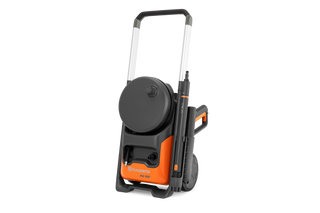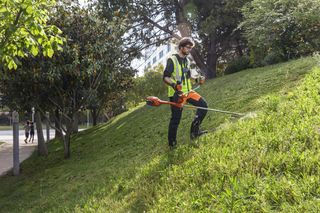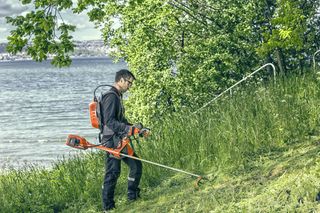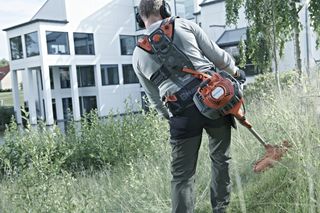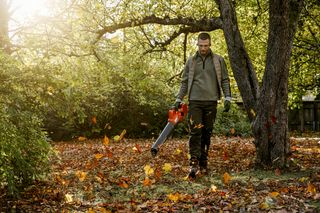
Clean patio slabs effectively – 5 methods
Do your patio slabs look dull, with the growth of moss, algae and lichens? Here we suggest five ways to make them nice again:
1. Scrub and clean
Rinse the tiles with a water hose and scrub them with a scrubbing brush. If there are lots of weeds between the tiles, you can clear them with a weed hoe, preferably one with a long handle so you can stand up and work.
2. Brush with joint sand
When the tiles are dry, pour joint sand over them and brush them with a scrub brush. This method has an abrasive effect and can also work against lime stains on concrete slabs.
3. Rinse with a pressure washer
A high-pressure washer is a handy tool for cleaning stone tiles. It is best to use the high-pressure washer together with a rotating surface cleaner attachment. It is effective against lichens, which are often white or grey and usually sit extra hard, and distributes the water more widely over the surface, which is gentler on the stone slabs. If you use a high-pressure washer without a rotating attachment, avoid using the strongest pressure. Instead, use a wide jet, and angle the jet to 30 degrees so as not to wash away the joint sand or damage the tiles. Concrete tiles are more porous than natural stone, so you should be extra careful with them.
Only using water is an environmentally friendly way to clean the stone tiles. Still, when water availability is not good, you might want to save water. Modern high-pressure washers use significantly less water than if you rinse with a water hose and can also be connected to rainwater tanks. Using the pressure washer when it has rained for a couple of days is most effective because the moss and algae come off more easily. Care should be taken to remove the moss and algae washed away to prevent new growth. Sometimes, you may need to add some new joint sand between stone tiles after use.
4. Detergents
For very stubborn algae and moss, you can connect a container with stone or patio cleaner to the high-pressure washer. Just keep in mind that some stone materials, such as sandstone, cannot withstand acidic detergent, so first check with the supplier about which detergent is suitable for your type of stone. Special strong detergents can be used against lichens, but stone cleaners and soap can also do the job, even if they need to lay on the surface for a while before you start scrubbing. If the tiles still look dull after removing dirt and algae, you can use colour enhancers to get an even tone and finer shine.
5. Preventive measures
When you have finished cleaning, it can be good to take preventive measures to protect the stone tiles from being hit hard by moss and algae again. There is, for example, environmentally friendly impregnation for tiles and stone, which counteracts moss, algae, lime deposits, and frost damage and is good to use once a year. There is also weed-inhibiting joint sand, which creates a desert-like condition and, in many cases, prevents both weeds and moss. Also, be sure to clean the stone slabs regularly to reduce the new spread of moss and algae.
